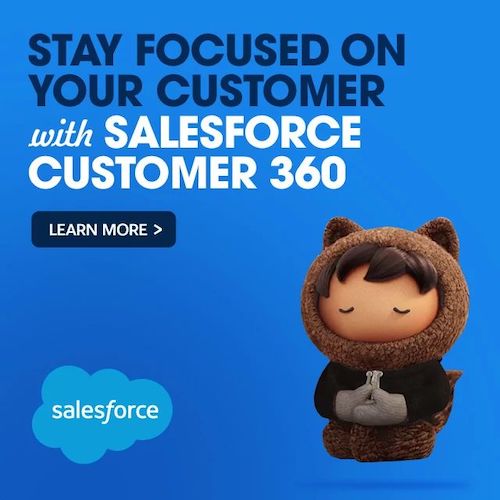Creating a customer experience strategy can be challenging at the best of times. Especially when you have to quickly scale up your sales, service, and engagement channels unexpectedly. As a result, quality, consistency, and efficiency can all take a serious hit.
As part of Salesforce Live: Benelux, we heard from three CXOs about how they managed to cope with sudden changes in customer demand during the COVID-19 pandemic. They also discussed the customer experience strategies they will be using in 2021 to sell, service, and connect successfully.
Before we get to why a customer experience strategy is essential for businesses to thrive in the New Normal, let's go over the basics.
What is a customer experience strategy?
A customer experience (CX) strategy should be your vision and plan for providing excellent CX to attract new customers and retain existing ones.
Customer experience was a driver for businesses even before the pandemic. Now that customer expectations are raised, it’s even more critical. The general uncertainty around economic and financial factors is also a consideration. The fact is that many consumers are much more cautious than they were. They just can’t afford to lose money or make bad financial decisions, so they’re more determined to find the best organisation possible to spend their money with.
You need to start by knowing your customers, and a CRM solution can make that much easier. The amount of data and information you have at your fingertips lets you create a customer experience strategy that perfectly matches your customer base.
1. Get a 360-degree view of your customer interactions
A seamless customer experience strategy starts with seamless colleague collaboration. However, many organisations are still struggling to make this a reality. In fact, 54% of customers say it generally feels like sales, service, and marketing don’t share information.
Establishing 360-degree visibility of customer interactions will enable your teams to provide a more joined-up and personalised service. Making data more accessible can do more than just enrich your customer experience strategy, it can also drive innovation.
“People will come up with new ideas; it can be a real accelerator.”
2. Listen and learn from customer feedback
Feedback is the gift that keeps giving. When designing new apps or launching new products, customers are often your greatest asset. But it doesn’t stop there! Customer feedback can also help you spot emerging trends and is very useful to build into your customer experience strategy.
“It’s often the hidden insights that hold the richest value,” explained Gebler.
To extract this value, organisations need to find new ways to capture and share data from different stages of the customer journey. The online supermarket, Picnic, has got this down to a fine art. Every week, it tests around 30 new ideas on a small group of customers. And then it analyses what worked and what didn’t.
“Experimenting is the only way to learn what really works. It helps us evolve our services more quickly.”
3. Ensure company values are visible across all touch points
The scope of a customer experience strategy just got a whole lot bigger. “It’s not just about the highly visible touch points, like apps and websites. Organisations also need to think about how customer orders are fulfilled and delivered by partners,” said Gebler.
“The customer experience extends across your entire supply chain.”
It also extends to your corporate values. The COVID-19 pandemic has changed how we view brands. Around 70% of people now pay more attention to companies’ values while 56% of customers re-evaluated the societal role of companies during 2020.
“Little acts of kindness can make a big difference,” said Richard Flint, COO of HEMA.
4. Utilise both existing and emerging channels
The pandemic forced organisations to rethink their routes to market. We found that 69% of customers say companies need to offer them new ways to access existing products and services.
Retailer HEMA, which supports the Netherlands Food Bank, had to temporarily close many of its 700-plus stores. This meant introducing new omnichannel journeys, such as timed slots for Click & Collect. Within a matter of weeks, it had increased its ship from store volumes by 70%.
“COVID-19 has pushed omnichannel into another dimension,” commented Flint.
And that means organisations need to ensure they have good presence and content across both existing and emerging channels.
“To create a great omnichannel experience, you need a diverse set of skills. Bringing people together from different disciplines into a single team can be a game-changer.”
5. Maintain momentum with investment and innovation
At times of crisis, organisations often put projects on hold. But that can impact both agility and scalability. Like many retailers, HEMA was concerned about how quickly it could scale up to meet the shift in demand during the pandemic. Instead of holding back, it pushed ahead.
“We were determined to keep investing in our mobile app and ecommerce offering,” commented Flint. “COVID-19 forced a lot of organisations to pull their business plans forward by a couple of years.”
New ideas, however, can introduce new challenges.
“You need to know how different elements of your infrastructure connect. If you pull the wrong string at the wrong moment, everything could fall apart.”
Agility is essential for overcoming new challenges and seizing new opportunities. In today’s dynamic digital world, customers won’t wait for you to catch up. They expect a great experience, and you need to be able to deliver every time on every channel even during peaks in demand.
Visualise, track, and manage real-time customer experiences — driving valuable engagement at the right moment, just the way your audience prefers.





